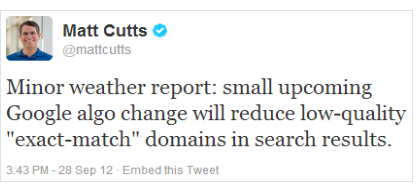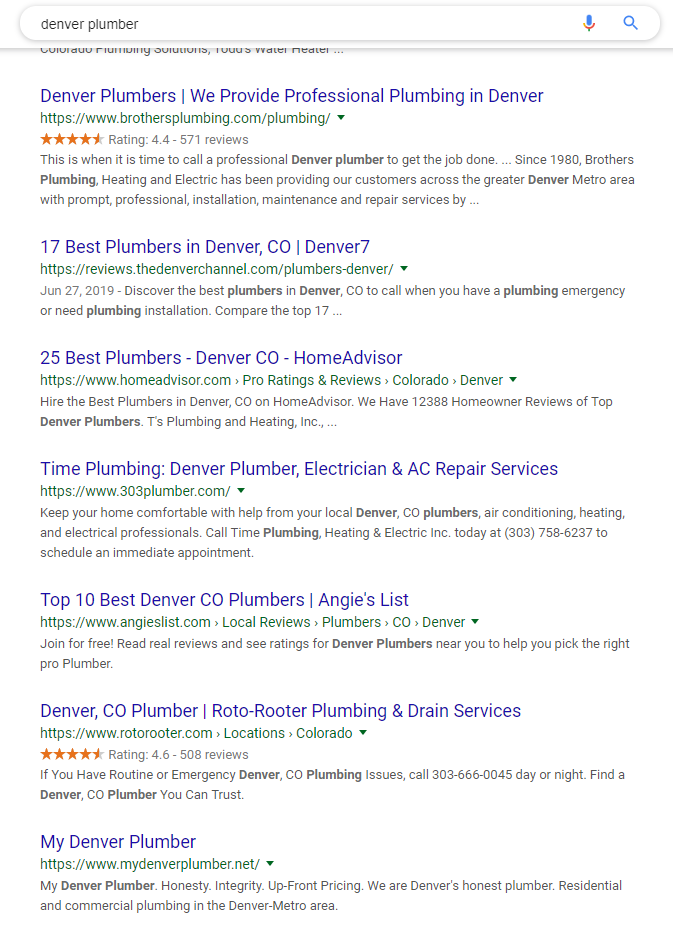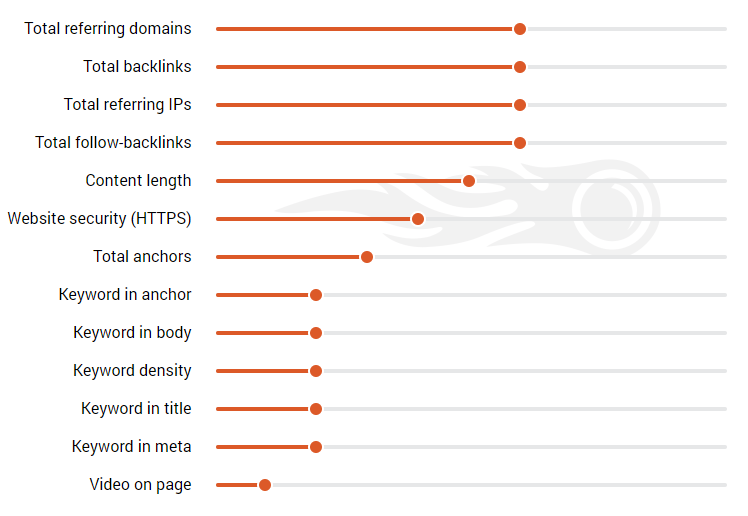SEO Guides, Tips & More!
Learn from Our Experience
Outdated SEO Tactics – 2019
The world of SEO and Google is constantly changing which means business owners and marketers are challenged with finding ways to stay present in search engines. There are many “tried and true” approaches which have remained important and essential to ranking well, and then there are the other strategies that are no longer effective. In fact, we often come across well-meaning folks who are using outdated SEO tactics believing it will help them increase their ranking. Sadly, it’s often having the opposite effect and harming their ranking position.
So, to help guide folks in the right direction, we have compiled a list of tactics that should be retired if currently being deployed.
Exact Match Domains (EMD)
These are domains that reflect the keyword term the site wants to rank high on. Using this approach, a relatively new website could gain ground in the search engine result pages (SERPs) very quickly and without much effort.
The result was websites with questionable value, but they were ranking high for competitive keyword terms simply because of the domain name. To curb this from happening, Google made an update to its algorithm in 2012 which had a drastic impact on how well these sites were performing.

This change permits website owners with relevant content to have a shot at ranking well in the SERP. Remember, Google wants to promote sites that deliver value to the searcher and not simply show sites that contain the same keyword as the searcher entered.
Below is an example of why EMD simply don’t work.

The search term for Denver plumber returns a few paid results along with the typical organic results. What stands out? There is only one domain with the word Denver and plumber contained within, and it’s at the bottom of the SERP.
This example clearly shows how Google is looking at more than just the domain name to determine the content relevancy and ability to meet searcher’s needs.
There has been a lot written on this topic, but MOZ covers the topic pretty well. In the end, EMDs can rank well for a targeted term, but it’s more important to find a domain name that matches the brand of the company rather than solely on the strength of a single keyword term match.
Buying Links
When search engines were less sophisticated, many website owners would attempt to propel their site’s rankings through link purchases. While relevant links from credible sources will help a site rank, the notion of purchasing low-quality links to increase rankings should be thrown out.
In fact, Google explicitly warns webmasters not to participate in buying links. If the link exchange is viewed as an attempt to manipulate the inbound (or outbound) links, the possibility exists for a Google penalty. (Sounds a little corny to those, not in the industry but trust me these penalties are not desirable).
According to Google, link schemes which can negatively impact rank include:
- “Buying or selling links that pass PageRank. This includes exchanging money for links, or posts that contain links; exchanging goods or services for links, or sending someone a “free” product in exchange for them writing about it and including a link
- Excessive link exchanges (“Link to me and I’ll link to you”) or partner pages exclusively for the sake of cross-linking
- Large-scale article marketing, or guest posting campaigns, with keyword-rich anchor text links
- Using automated programs or services to create links to your site
- Requiring a link as part of a Terms of Service, contract, or similar arrangement without allowing a third-party content owner the choice of using no-follow or another method of blocking PageRank, should they wish.”
What’s interesting is they provide insight into what steps a website owner can take to generate good rankings, and it has nothing to do with links.
“The best way to get other sites to create high-quality, relevant links to yours is to create unique, relevant content that can naturally gain popularity in the Internet community. Creating good content pays off: Links are usually editorial votes given by choice, and the more useful content you have, the greater the chances someone else will find that content valuable to their readers and link to it.”
Google tells us exactly how they view links and gives an outline of what to do in order to get them. In other words, don’t take the easy road and just buy links. Work hard to create a meaningful and relevant site that offers something to the visitor.
If a company is pursuing this strategy of buying links, then it’s time to stop.
Keyword Stuffing
This is an outdated tactic that doesn’t seem to go away. Many believe if they repeat the same term in different ways on the page then it will result in higher rankings. When search engines were not as complex as they are today, this approach yielded quick and easy gains. It was common to see terms “jammed” into a page where they didn’t make logical sense.
According to Google,
“Keyword stuffing” refers to the practice of loading a webpage with keywords or numbers in an attempt to manipulate a site’s ranking in Google search results. Often these keywords appear in a list or group, or out of context (not as natural prose). Filling pages with keywords or numbers result in negative user experience and can harm your site’s ranking. Focus on creating useful, information-rich content that uses keywords appropriately and in context.”
SEM Rush published a study highlighting the top ranking factors in 2017; while the study is a bit dated, it’s important to note the results. Look below to see where keyword density and other keyword metrics fall in terms of importance,

Outside of video, these metrics are at the bottom of the stack. Obviously, keyword terms need to appear in the body of the content, but it’s important not to randomly insert these terms thinking they will elevate the site on the SERP.
If a company is pursuing this strategy, then it’s time to stop.
Duplicate Content
It’s our sincere hope that no one reading this blog believes that duplicating content without making any changes, edits or additions is a good way to build a presence on Google. It’s just not!
Remember, Google values original content that gives site visitors something new and unique. If the content on a site is essentially a “cut and paste” from another site, then what value can possibly be obtained?
While it does nothing to help promote SEO, duplicate content is not immediate grounds for a penalty. In fact, many believe there is such a thing as a duplicate content penalty from Google, and that is simply not the case.
“Duplicate content on a site is not grounds for action on that site unless it appears that the intent of the duplicate content is to be deceptive and manipulate search engine results. If your site suffers from duplicate content issues, and you don’t follow the advice listed above, we do a good job of choosing a version of the content to show in our search results.”
If a company is pursuing this strategy, then it’s time to stop.
Wrapping it Up – Outdated SEO Tactics
There are plenty more tactics that I could have discussed in this blog but believe these are the top ones we experience on a regular basis.
Let me know in the comment section below what you think of the list. Did we miss something?

